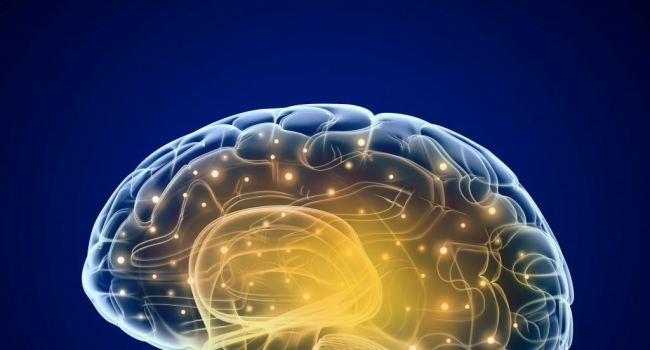- Latest news▼
-
14:16, May 2 Patterns: Neural network created that models outcome of various patient therapy methods

-
12:05, May 2 Armenia joins Council of Europe convention on protection of patients' rights

-
14:27, May 1 Journal of Neuroscience: Sluggishness of the elderly is due to greater use of calories, research finds

-
10:26, May 1 AstraZeneca admits its Covid vaccine can cause thrombosis

-
19:31, April 30 Scientists calculated how much time per day you should be sitting, standing and sleeping

-
17:37, April 30 The Conversation: Keeping bread in the fridge improves its health benefits

-
14:30, April 30 Frontiers in Molecular Biosciences: Researchers use AI to identify 191 new destructive viruses

-
08:38, April 30 The Guardian: First personalized cancer vaccine developed

-
23:55, April 29 Ketodiet improved the condition of patients with schizophrenia and bipolar disorder

-
19:47, April 29 In 64% of COVID-19 survivors, the condition worsens after one year

-
15:41, April 29 ECU: body tilt in patients after stroke was found to be curable

-
13:37, April 29 Blood: blood cancer drugs may be useful in rheumatoid arthritis

-
13:15, April 29 362 cases of measles recorded in Armenia so far in 2024

-
11:48, April 29 3 women diagnosed with HIV for first time after getting ‘beauty injections’ in US

-
15:32, April 26 ESCMID: New method of purifying the air with ultraviolet light could protect world from new pandemic

All materials
Consciousness partially restored in man who spent 15 years in vegetative state

Doctors generally accept that the damage from a traumatic brain injury is irreparable after a person spends 12 months in a vegetative state. New research has just turned this idea on its head.
Neuropsychologists in France have restored a minimal level of consciousness in a man with profound brain injuries who has been in a vegetative state for more than a decade. Their findings, published Monday in Current Biology, unlock a potential path for bringing consciousness back to thousands of patients previously thought beyond help.
“We choose a patient who was in a vegetative state [for] 15 years, showing no sign of change since his car accident,” neuroscientist and study co-author Dr. Angela Sirigu said in an email. Little else is publicly known about the 35-year-old man, as the researchers have chosen not to share his identity and his family has declined to speak on his behalf.
Brain activity returned to the patient due to the researchers’ use of a technique called vagus nerve stimulation (VNS), which they had hoped could rehabilitate his consciousness.
The vagus nerve connects “most of the key organs — heart and lungs included — to the brain stem,” Samuel K. Moore wrote in IEEE Spectrum. “It’s like a back door built into the human physiology, allowing you to hack the body’s systems.” Since the 1990s, stimulating the vagus nerve with an electrical current from a pacemaker-like device has been explored, with mixed results, as a treatment for neurological issues such as epilepsy, migraines and depression.
Sirigu and her colleagues tried VNS on the vegetative patient for six months.
After the first month of the procedure, an electroencephalogram (EEG) brain scan “revealed a significant increase in theta band (4–7 Hz) power,” which is the brain wave associated with daydreaming and ideation. The brain activity does not represent full consciousness; more like the trance you fall into when you are driving on a particularly straight stretch of highway, but it is a marked improvement from an unresponsive vegetative state.
Yet visitors noticed the change in the patient. “After VNS, the patient could respond to simple orders that were impossible before,” Sirigu said, “to follow an object with his gaze, to turn the head [to] the other side of the bed on verbal request.” The patient even managed to stay awake and show more attentiveness when read to by his mother.
The researchers plan to pursue the VNS approach in other patients whose traumatic brain injuries were thought beyond remedy, and the team is hopeful. “Changes even in severe clinical patients are possible when the right intervention is appropriate and powerful,” Sirigu said. “After this case report we should consider testing larger populations of patients.”
Follow NEWS.am Medicine on Facebook and Twitter
- Video
- Event calendar
- Children’s Hospital Los Angeles and International Center of Professional Development Allergy/Immunology Conference
- First Armenian-German Conference entitled “Heart Failure Spring School”
- Allogeneic bone marrow transplant in case of hematological malignancy performed in Armenia for first time
All materials
- Archive
- Most read
month
week
day
- ESCMID: New method of purifying the air with ultraviolet light could protect world from new pandemic 1449
- Children’s Hospital Los Angeles and International Center of Professional Development Allergy/Immunology Conference 1343
- Enzymes that convert different blood groups into first group are discovered 1307
- JAMA: patient grew long, curly eyelashes because of chemotherapy 1237
- 3 women diagnosed with HIV for first time after getting ‘beauty injections’ in US 1142
- 362 cases of measles recorded in Armenia so far in 2024 826
- In 64% of COVID-19 survivors, the condition worsens after one year 791
- Ketodiet improved the condition of patients with schizophrenia and bipolar disorder 767
- ECU: body tilt in patients after stroke was found to be curable 753
- Blood: blood cancer drugs may be useful in rheumatoid arthritis 738
- Scientists calculated how much time per day you should be sitting, standing and sleeping 620
- The Guardian: First personalized cancer vaccine developed 613
- Frontiers in Molecular Biosciences: Researchers use AI to identify 191 new destructive viruses 595
- The Conversation: Keeping bread in the fridge improves its health benefits 582
- AstraZeneca admits its Covid vaccine can cause thrombosis 512
- Find us on Facebook
- Poll





